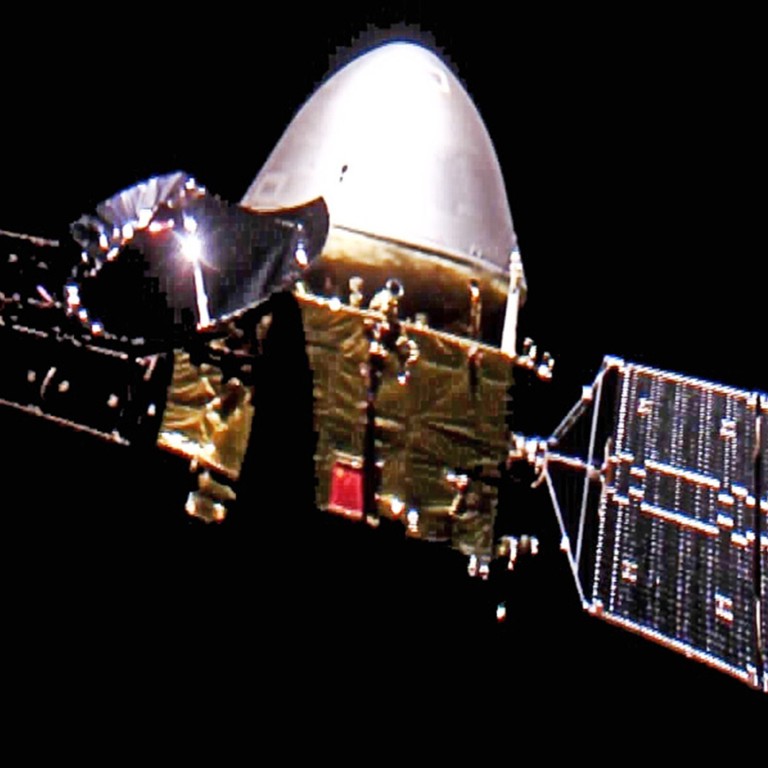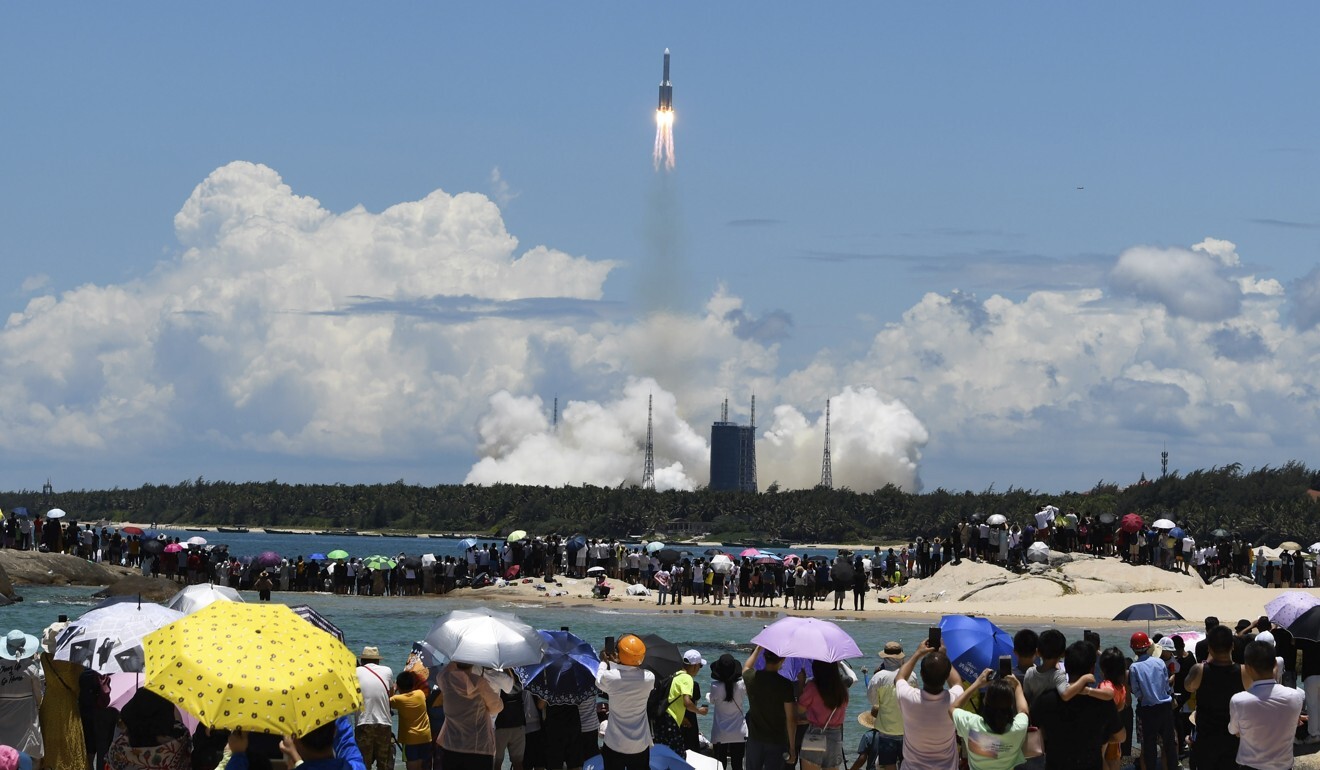
China space programme: Tianwen-1 enters Mars’ parking orbit ahead of touchdown in May
- All flight control systems and equipment ‘working normally’, National Space Administration says
- Notice comes just days after America’s Perseverance probe sent back the first audio ever recorded on the surface of the red planet
China’s Mars probe has entered the red planet’s parking orbit where it will operate for the next three months before attempting to land, according to the China National Space Administration.
The Tianwen-1, which had been circling Mars since February 10, entered its parking orbit on Wednesday, the agency said.
“Currently the status of equipment is normal and all flight control systems are working normally as planned,” it said.
Each complete orbit will take Tianwen, or “Heavenly Questions”, two Martian days – or slightly longer than two days on Earth – with the lowest and highest points being 280km (174 miles) and 59,000km above the planet’s surface.
During its time in orbit, Tianwen-1 will use its cameras and spectrometer to carry out a detailed investigation of the Martian landscape and weather at its intended landing site before a planned touchdown in May.
When the time is right, a landing module and rover will split away from the orbiter and head towards the surface, using a heat shield and parachute to make a controlled approach. The rover is programmed to operate for 90 days on Mars.
Last week, the United States’ rover Perseverance successfully landed on Mars at Jezero Crater and sent back the first audio recorded on the planet’s surface.

The Chinese and US missions, along with the United Arab Emirates’ Hope project which reached Mars a day before Tianwen-1, were all launched in July last year. After a journey of about 472 million km all three arrived safely.
The Hope aims to orbit Mars for about one Martian year (687 Earth days), during which time it will study its atmosphere and weather. The Perseverance will also remain on Mars for a Martian year while it collects samples from the surface for a separate probe to take back to Earth.
On Tuesday the US Congress had a hearing to discuss the advancements being made by Russia and China regarding space and nuclear weapons.

